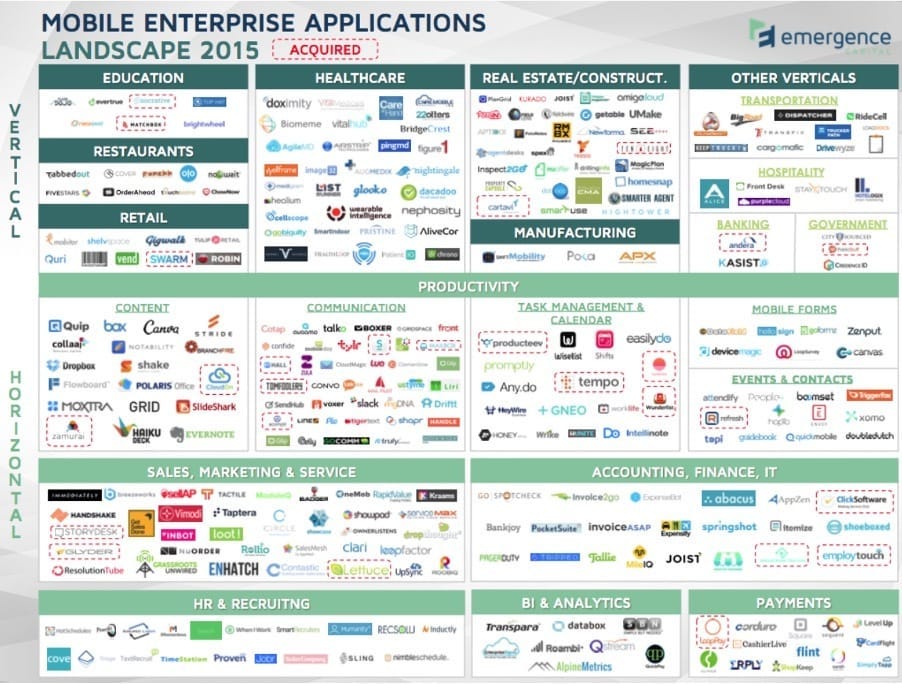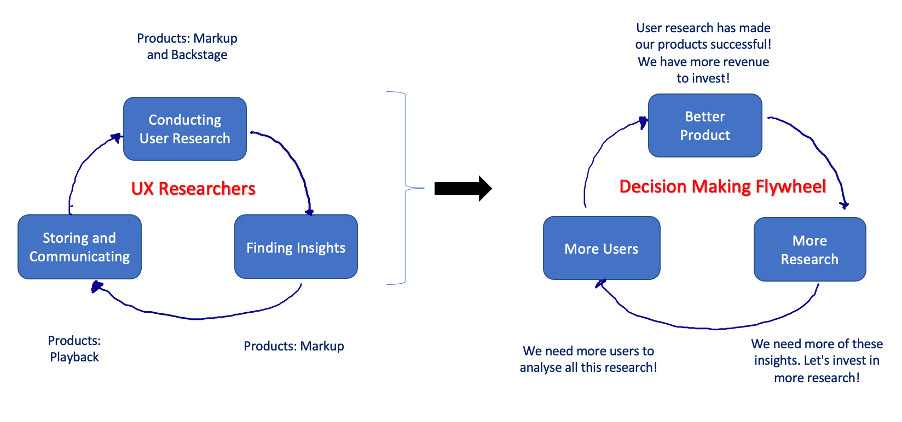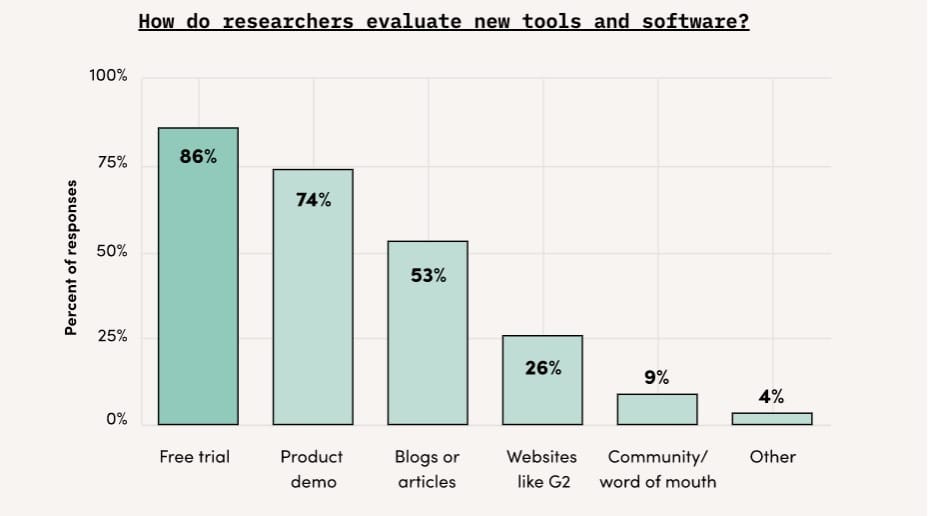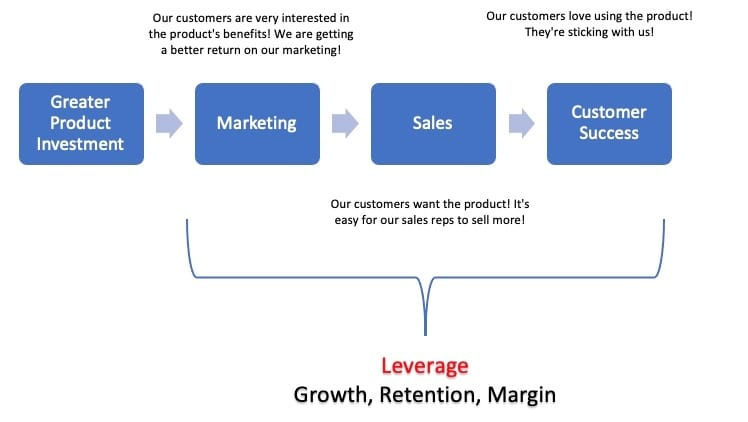How Dovetail’s User Research Software Achieves Sustainable Growth Through Customer Centricity
Dovetail's Human Approach to Customer Centricity
Hi everyone! 👋
I'm excited to be collaborating with the person driving Dovetail's sustainable growth. Dovetail is a great example of how innovative pricing can complement customer centric product design.
If you've been forwarded this, and are curious about how successful long-term businesses are built, subscribe below.
After 20 years, there are now tens of thousands of SaaS tools in the market. How can customer centricity help startups stand out in such a crowded market?
As a follow-up to my articles on building customer centric products and pricing, I spoke to Emlyn Gavin. Emlyn has prior experience sustainably scaling high-growth businesses like Dropbox and New Relic. As Dovetail’s Head of Revenue and Operations, he is perfectly placed to lead the sustainable growth that it is known for.
Dovetail’s product and pricing strategy do two things- they provide customers with a great experience and help them promote their views. Giving people a voice is a deeply human approach to customer centricity. The customer advocacy this creates will form the basis for years of continued growth.
In this article, learn how Dovetail succeeds by:
Picking an Underserved Market that’s About to Take-off
Building Customer Centric Products – Making a ‘Bet’
Innovative Pricing that Customers Can Understand
Dovetail’s Sustainable Growth – The Power of Customer Centric Pricing
This is Only the Beginning – Building a New System of Record
Conclusion
Picking an Underserved Market that’s About to Take-off
The SaaS industry is getting crowded. In the past 20 years, tens of thousands of new SaaS tools have come onto the market. In 2018, there were 34,727 software products listed on G2 Crowd across 745 vertical industries.
How can a SaaS startup stand out? By finding a segment of users who have been largely ignored.
Sample of SaaS products - a crowded space
There is currently a lack of specialised user experience research (UX) tools. This is because user research involves qualitative, unstructured data. The benefits can be hard for senior stakeholders to quantify. UX researchers are forced to use many different tools.
However, products like Netflix have created an expectation of a great software experience (see my article on product led growth).
Therefore, the importance of UX research is set to grow. In 2017, there were 1 million jobs in UX. By 2050, that number is expected to reach 100 million.
This underserved customer segment is set to take-off and is a great space to build a SaaS business.
Building Customer Centric Products – Making a ‘Bet’
My previous article (here) describes how customer centricity can help companies build and launch great products. User experience researchers have an important role to play in this.
A strong customer understanding is the first step before decisions such as product features or design can be made. What are customers’ underlying needs? How can we improve their lives? To answer these questions, UX researchers use various methods such as user interviews, surveys etc.
These methods result in a large amount of qualitative, unstructured data, which must be turned into insights that can be used to improve the product. This is a time-consuming process requiring a variety of different tools. Dovetail’s products simplify this process.
Markup: Helps researchers find actionable insights from qualitative data like user interviews.
Playback: A searchable research repository, or home for existing and future raw research and insights. These insights can be viewed by other stakeholders or people leading the product development process (e.g designers and product managers).
Backstage: A research participant management solution. It works like a CRM to track customers participating in the research process.
Learn more about the research process and how Dovetail’s products help here.
Despite their importance, user researchers are under-appreciated. It’s hard to communicate customer needs if you’re not frequently working with customers. Slideshow files and presentations can’t always build the trust that decision makers need to act on the researcher’s insights. User research is often the sacrificial victim when it comes to budget cuts.
Great products are built based on a ‘bet’ on the future direction of the market. Dovetail’s founders came from Atlassian. Developers loved Atlassian’s early products because they:
Made their work easier by giving them all the tools needed to manage software projects in one place.
Gave them tools to collaborate.
Similarly, Dovetail’s growing suite of products and features allow UX researchers to:
Conduct and store all their research in one place: A single provider gives UX researchers a seamless and consistent experience across all their tasks.
Collaborate and share their insights with decision makers: Researchers get the tools to organise their insights and easily build professional, interactive reports. The result is that decision makers have an ‘audit trail’ of their thought process. This builds trust and increases the likelihood of the researcher’s insights influencing product development.
For UX research to become a key function in any business, it’s not enough to provide a great software experience. Dovetail’s ‘bet’ is that UX researchers can build an audience with decision makers through collaboration.
Clearly linking UX research with successful product development helps companies quantify an ROI for UX research. This results in a flywheel effect as shown below:
Dovetail's Flywheel Effect
I’ve previously spoken about the leverage that products can have on an organisation. By providing a clear link to this crucial function, UX researchers are finally given a seat at the table with senior leadership. This is the underlying need that Dovetail’s founders are betting on.
The next step is designing a pricing strategy that compliments this ‘bet’ - one that customers can understand.
Innovative Pricing that Customers Understand
A pricing strategy needs to be aligned with how customers want to purchase. UX research software is a nascent market. Researchers have to be a resourceful bunch, often trying different tools to see what works best. They need flexibility and choice. Therefore, free trials and product demos are the main ways to evaluate software.
UserInterviews State of User Research 2022 Report
However, there is a trade-off between choice and simplicity. This is why similar software providers like Miro and Figma have pricing packaged into a handful of ‘free, good, better, best’ bundles. This
Forces their customers to make a purchase decision before experiencing the full value of their products (e.g. all of the features in their ‘best’ bundle)
Limits their choice on what features they want to pay for.
How does Dovetail offer customers more choice while still being simple to understand?
The above choices look complex. However, Dovetail’s simplicity lies in its thoughtful ‘free’ option. Unlike competitors who limit the functionality in their free tier, Dovetail’s free tier includes all its major features and products.
Researchers have a low risk (free forever!) way to experience and evaluate the value of all three products. Dovetail then allows them to choose individual products that best suit their needs.
This is where Dovetail’s customer centric pricing becomes clear.
Dovetail’s Sustainable Growth – The Power of Customer Centric Pricing
A customer centric pricing strategy:
Aligns the value of what customers get with what they are willing to pay.
Complements the product strategy by promoting the ‘bet’ the company is making on the future direction of the market.
Is built sustainably by balancing the lifetime value of customers with their costs.
Dovetail’s thoughtful pricing strategy is a case study on how all these criteria can be achieved.
Priced to Value
Customers often compare the prices for the SaaS tools they are using. However, at over 90% gross margins, Dovetail’s pricing is predominantly value based.
There are three key levers to the value Dovetail provides and, therefore, the amount customers pay:
Number of Users: More users mean more research, resulting in more insights and value. See the flywheel diagram.
Complexity: Markup is the most complex product but also provides the most value (e.g. productivity gained). The Business and Enterprise bundles are for customers that have more complex buying requirements. These bundles provide additional administrative controls and customer support. Examples include custom invoicing and contracting, priority support (e.g. dedicated success manager) and HIPAA compliance (private health data).
Collaboration: Dovetail distinguishes between users and viewers (can view but not edit the data) in their Playback and Backstage products. Allowing collaboration across the organisation is a huge part of Dovetail’s value. More viewers equal more value. Despite this, Dovetail’s paid tiers allow unlimited viewers. This is the product ‘bet’.
The Product ‘Bet’ - Built for Collaboration
Research by nature has a high failure rate. Typically, most product ideas do not work to expectations. Those that do can have a huge impact on the business. How can researchers convince decision makers to invest in their idea?
Many founders can identify with this. Dovetail understands that the UX researcher is like an entrepreneur undertaking a fundraising process:
The more people that can understand the researcher’s point of view, the higher the likelihood of success. i.e. successfully influencing the product roadmap
The more successes the researcher achieves, the more people are interested in her/him.
Allowing for unlimited viewers introduces more people to Dovetail’s products and highlights the value of research (and therefore the researcher) in the organisation.
Giving away this value upfront promotes the adoption of Dovetail but is it sustainable?
Sustainable Growth
For a business to be sustainable, the lifetime value of customers needs to be balanced against the cost of acquiring them.
Providing so much value upfront (comprehensive free tier, unlimited viewers) increases Dovetail’s sustainability due to:
Efficient revenue growth: Typically, selling to existing customers is more efficient than selling to new ones. Customers love Dovetail’s products after trying them. Take-up of their products increases sharply after 12-18 months. This is the flywheel at work which was illustrated previously.
Low Churn: Churn rates are low, thanks to the value that Dovetail’s products provide and the support customers get from the company and its active community.
Dovetail sets its marketing budget based on a healthy Lifetime Value to Customer Acquisition Cost ratio of 5x and achieved 200% revenue growth in the 12 months to January 2022.
Dovetail is proof that a great product experience and growth do not have to come at the expense of sustainability.
However, the SaaS space is getting more competitive. How can Dovetail maintain its sustainable growth?
This is Only the Beginning – Building A New System of Record
The SaaS space is getting increasingly competitive with rising customer acquisition costs and tens of thousands of software products. How can Dovetail create a platform to launch new products and sustainably grow?
A system of record is a software system that stores key data relating to a business function. Ownership of this data storage system effectively means that the business function cannot be done without this software. Iconic companies have been built from the ownership of a system of record, such as:
Sales and Marketing: Customer relationship management systems like Salesforce
Administration: Enterprise resource planning (e.g. HR, Finance) systems like Workday
User/Customer Research: ???
A system of record is more than a place where important data is stored. It’s about the standardised practices and business processes built on top of it. This is where Dovetail’s product and pricing ‘bet’ on collaboration come together.
With Dovetail, researchers are empowered to build an audience towards their way of thinking. Dovetail then helps these users organise around common standards through its community and content initiatives. The screenshot below is an example of a discussion in their Slack community around tagging.
Screenshot from Dovetail's Slack Community
Thanks to Dovetail, researchers will become increasingly linked to successful product development. This elevates them to become powerful advocates in the Product team. As my previous article explains, the Product team is a powerful platform that can build relationships across departments. This is because a better product makes everyone’s job easier, as shown below.
Great products make everyone's job easier
Dovetail will then have a platform to build products for other business functions, such as marketing. This greatly increases their addressable market and makes their product stickier with customers.
As such, Dovetail’s progress to date is just the beginning of what’s possible. By betting on collaboration, Dovetail’s founders are following in the footsteps of their famous alma mater, Atlassian.
Conclusion
With thousands of tools out there, it’s tough starting a SaaS business today. However, Dovetail shows how startups can still succeed by deeply understanding their customers. This understanding has allowed them to:
Identify and target a segment of underserved users (UX Research).
Understand their underlying needs and make a product ‘bet’ around building an audience through collaboration.
Create an innovative yet simple pricing strategy to promote this ‘bet’.
My favourite part is the deeply human element in their approach. Giving people a voice is one of the best things you can do for them. This creates a level of advocacy that will form the basis of Dovetail’s growth for years to come.







